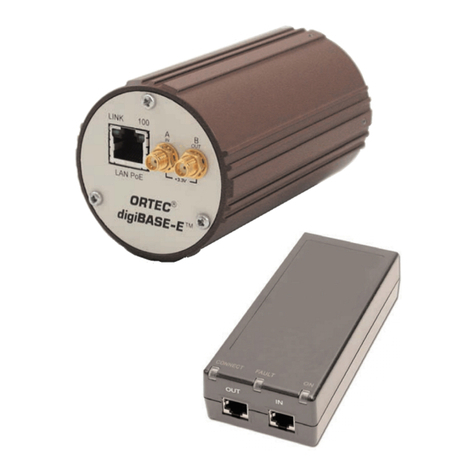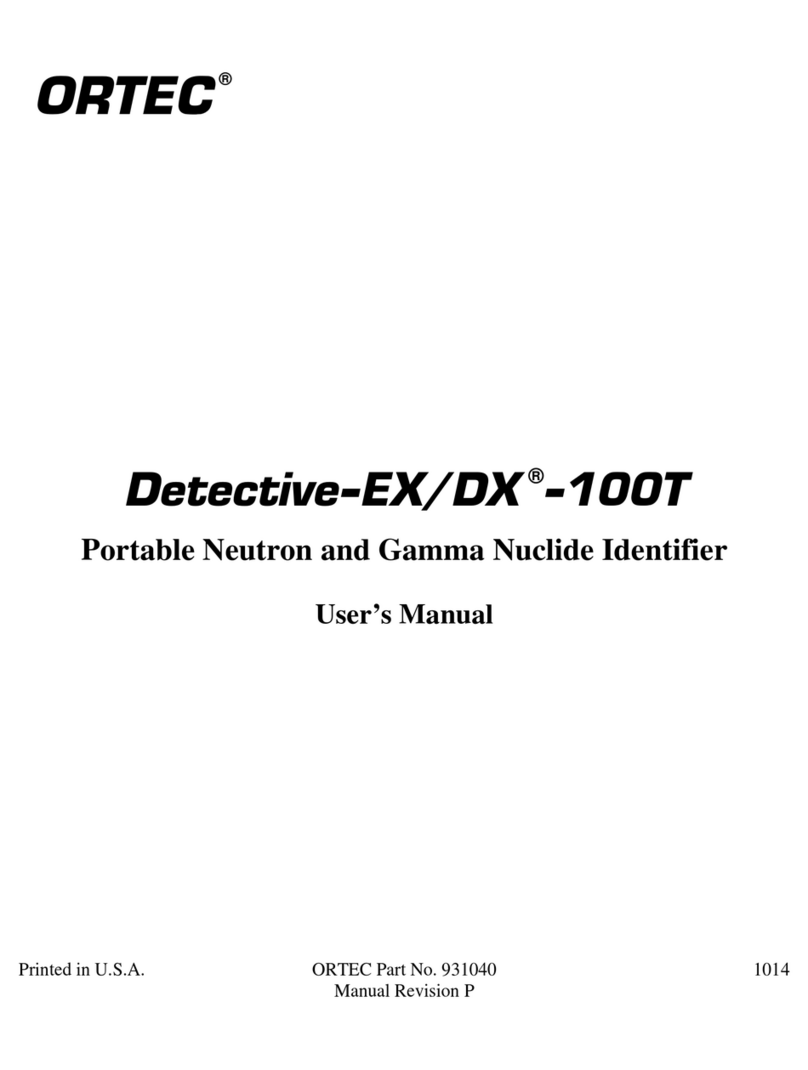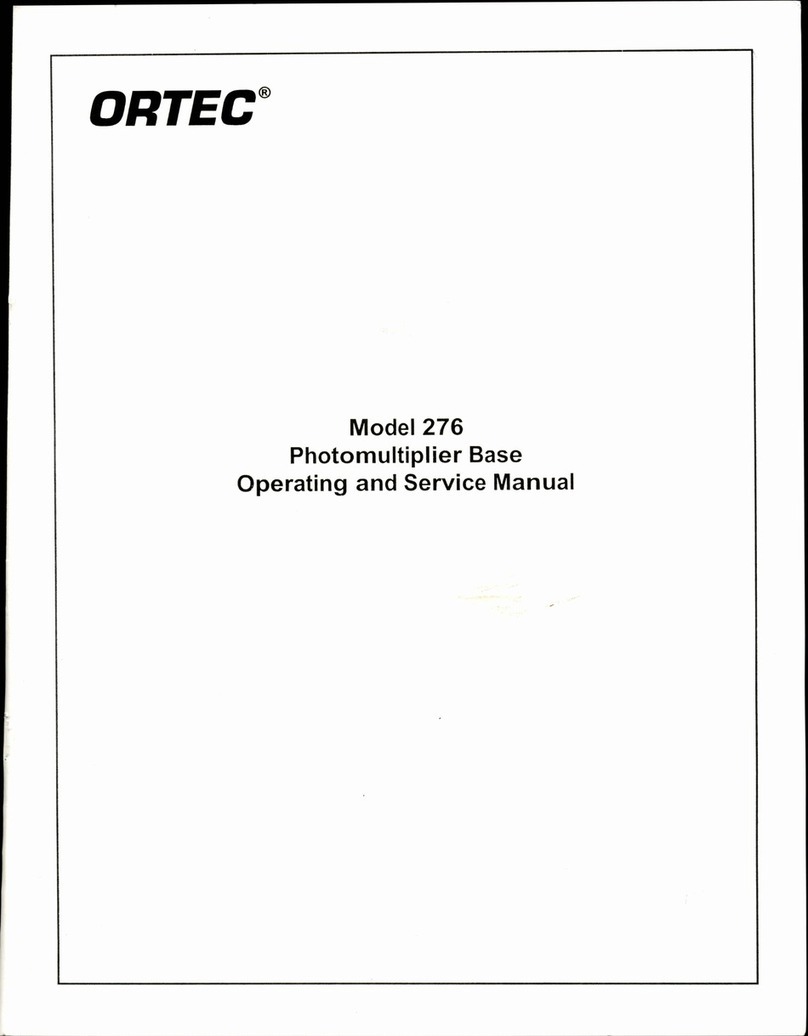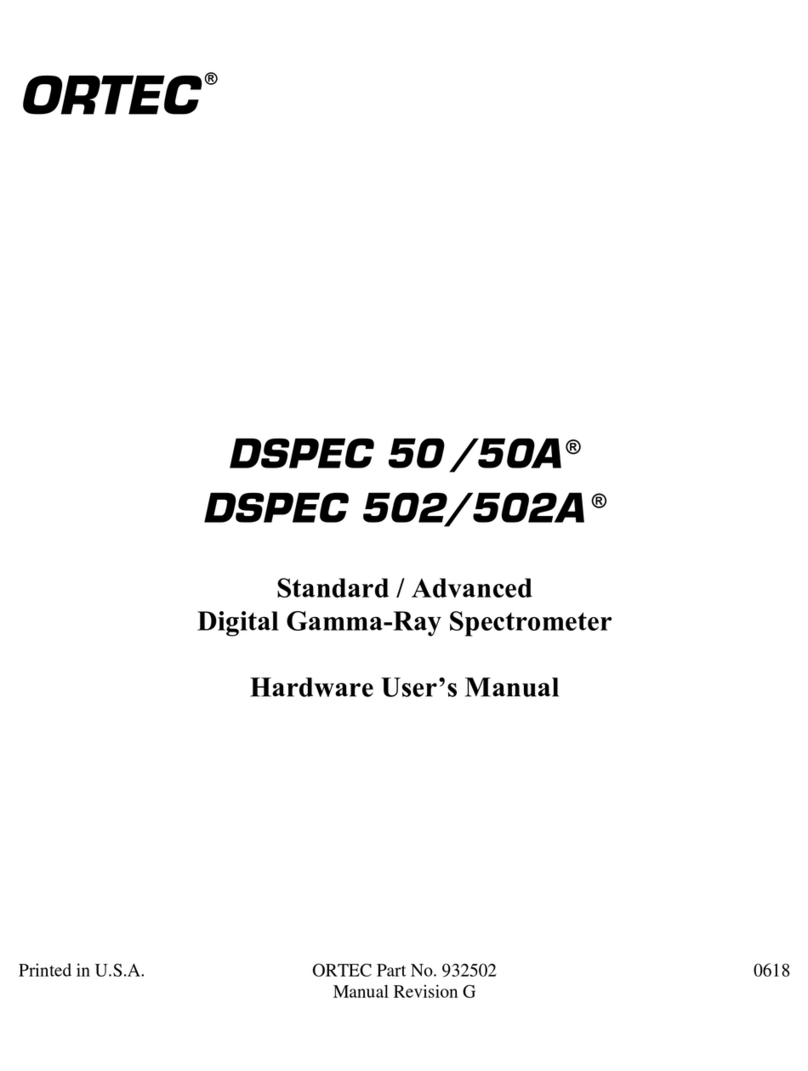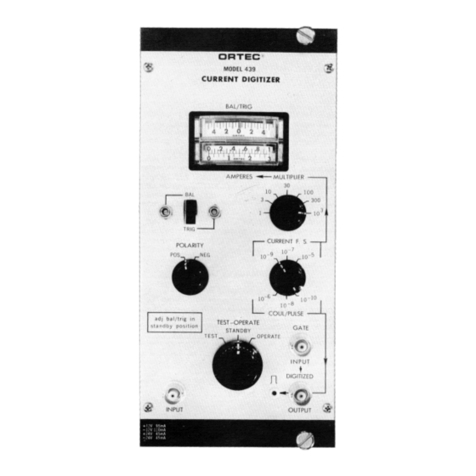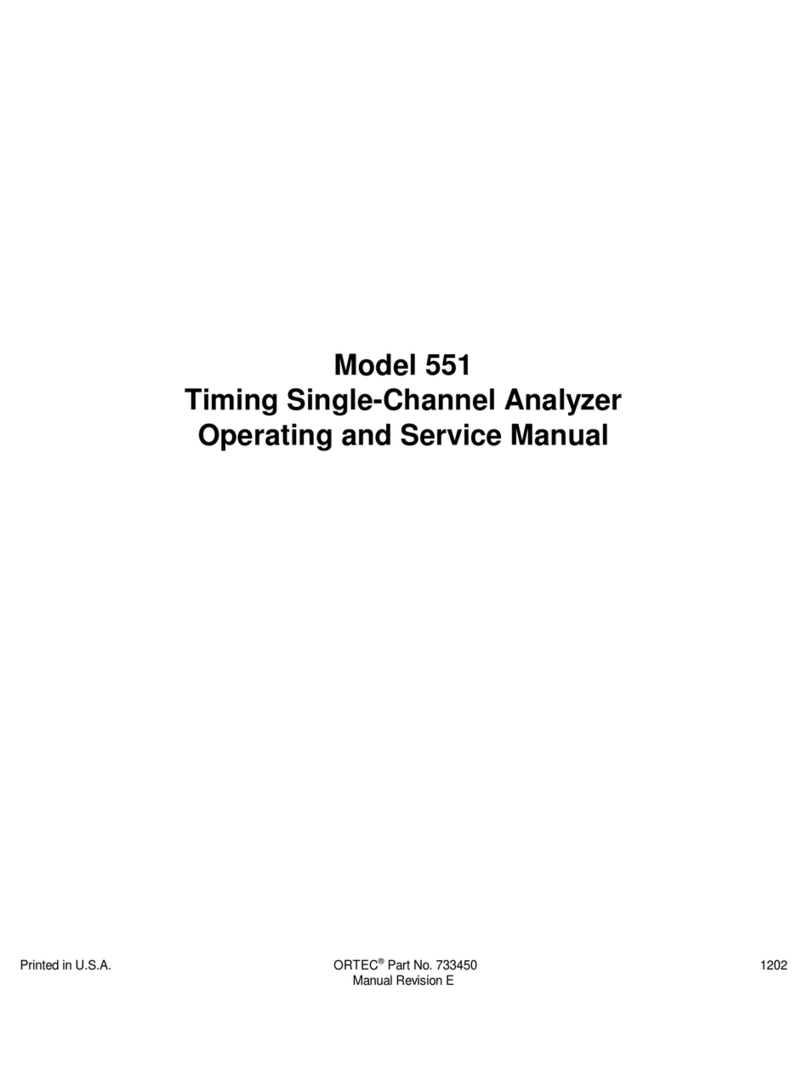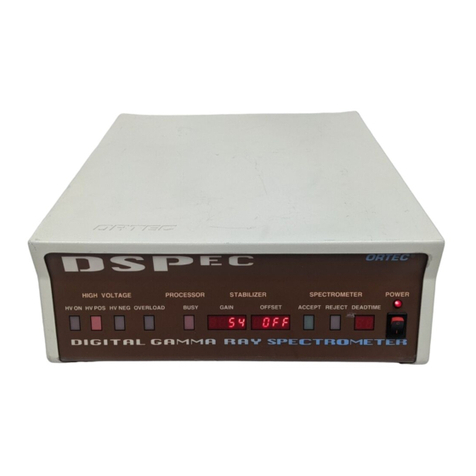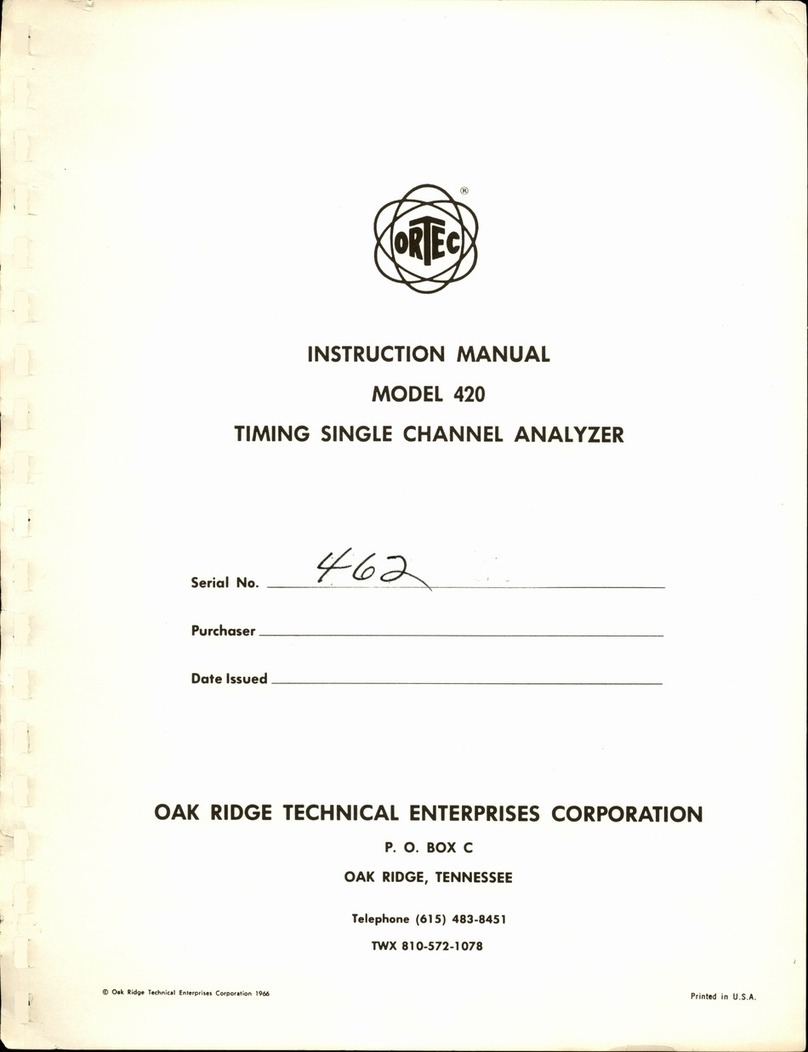5
4. OPERATING INSTRUCTIONS
4.1 introduction to Fast Timing with Linear Signals
The precise determination of the time of a nuclear event,
simultaneous with the mea~uramant of its energy, hasbeen
restricted in the past to two timing techniques - zero
crossing and level discrimination. In the zero-crossing
method the timing SCA simply detects the time at which
a bipolar linear signal crosses the baseline. For a double-
delay-line shaped signal the zero-crossing phase point con-
tains the same information as the 50% charge collection
time on the leading edge of the signal. For some signals the
zero-crossing point provides excellent time resolution.
There are two rather savera limitations to~the zero-crossing
technique. First, the amplitude n&e of a bipolar signal is
normally worse than a similarly shaped unipolar signal.
Consequently, the edges of the energy window set by the
SCA are not as precise as they would be for a unipolar signal.
The second limitation of the zero-crossing technique is
that the time information cannot be obtained until the
signal crosses the baseline. The added time delay before
getting the time information is not a savera limitation in
DDL applications, but for simulated Gaussian-shaped signals
the added delay may be several microseconds.
A simple level discriminator is used to obtain time infor-
mation by the second technique. The usual mode of
operation allows the level discriminator to trigger on the
leading edge of the signal and to then reset when the signal
falls below the discrimi,nator level. Either of these trigger
points can be used for the timing information. If the
leadingedge trigger point is used, it must be delayed beyond
the peak of the input signal for the single-channel ampli-
tude decision to bemade. The basic limitation of this system
is that it introduces a time walk due to changing signal
amplitudes, and the magnitude of the walk is usuallyequal
to approximately the rise time of the signal. For different
types of signals this walk will range from tens of nano-
seconds to microseconds.
The 455Constant Fraction Timing Single Channel Analyzer
introduces a new timing technique that has been applied
successfully in many fast timing applications. The CFPHT
(Constant Fraction of Pulse Height Trigger) provides a
degree of freedom from the major limitations imposed by
the two techniques previously used. This feature can be
understood best by observing the basic wave shapes in
Figure 4-1. The linear signal is stretched and attenuated
by an amount set by the fraction switch, F. The timing
discriminator is triggered when the signal exceeds the lower-
level discriminator. The timing discriminator is then rasat
when the signal becomes less than the stretched attenuated
signal, as shown in Figure 4-1. For a signal with a different
amplitude the stretched signal remains a cowsent fraction
of the signal amplitude and the re%et of the lower-level
discriminator remains timeinvariant. By selecting the
fraction judiciously, en optimum time rasolution for a
Figure 41. Principle of Constant Fraction
Timing Signal Derivation
given signal shape can be obtained, in addition to the
systematic walk being eliminated. Bipolar inputs can be
accepted but era not required. By selecting smaller
fractions, the timing signal is derived very near the input
signal peak to minimize the added~delay before the signal
arrives at the output.
4.2 Typical Operating Conditions
Each application of the 455 involves a specific datector-to-
amplifier configuration with unique pulse shape character-
istics. inspection of the details of the pulse will aid in
Selection of the timing fraction that will provide the best
accuracy. The Constant Fraction is selected at a point along
the decay of the input pulse and measured as a portion
of the drop from peak amplitude toward the baseline. The
optimum point along the decay is one with maximum
slope and minimum noise; this will rasult in the largest
slope-to-noise ratio. When two or more points offer~about
equal qualifications, the smaller fraction provides the
earlier timing output.
Note that the fraction selected refers to the fraction of
amplitude decay toward the baseline as measured from
the input pulse peak. The settings are from 10% through
50%. plus Bipolar which is equivalent to a 100% fraction
selection. The resulting stretched signal level is shown to be
greater than the lower-level discriminator in Figure 4-1, but
this condition is not required; in fact, the smaller amplitude
input signals which are just large enough to trigger the
lower-level discriminator will normally provide a stretched
signal level below the lower level. See Sections 5.3 and 5.4
for further information.
4.3 Front-Panel Control Functions
Mode Selector. This four-position switch ?elects the integral
mode or one of three circuits for the differential modefor
the single-channel analyzer. For the integral mode the
lower-level discriminator or an external baseline will
determine response, and no upper-level discriminator is

